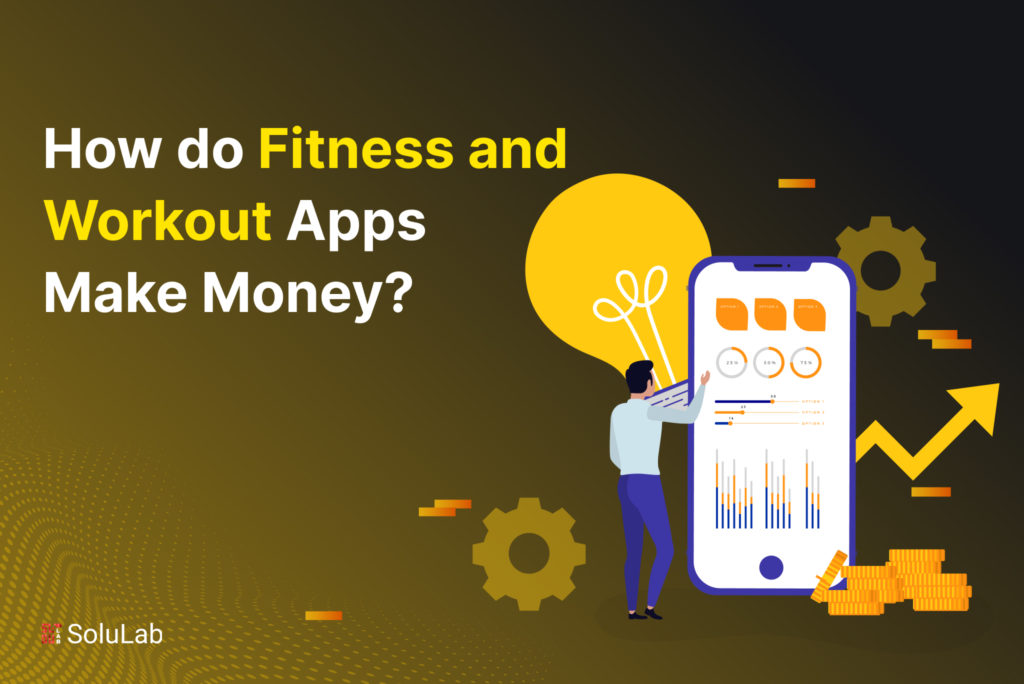
In an era defined by a heightened emphasis on personal well-being and a tech-savvy populace, the fitness app industry has burgeoned into a domain of extraordinary growth. With smartphones becoming ubiquitous companions, these apps have transformed into essential tools that guide users on their journey toward better health and fitness. However, beyond their role as wellness mentors, these apps are also shrewd economic entities employing a diverse array of strategies to generate revenue. So, how do apps make money or in particular, how much do fitness apps make?
The pursuit of comprehending the multifaceted avenues through which fitness and workout apps amass profits is a sagacious endeavor. This article embarks on an exploration of these monetization strategies, casting light on the intricate mechanisms that empower these applications to sustainably fuel their operations and innovations.
How do Fitness Apps Make Money: Exploring Varied Monetisation Models

The evolving interplay between commerce, wellness, and technology continues to reshape how these apps engage users and generate revenue, further enhancing our understanding of their intricate dynamics.
Data Monetization: Transforming User-Generated Data into Invaluable Resources
The modern landscape of fitness trainer apps extends beyond the realm of physical activity and ventures into the digital domain of data. This section delves into the practice of data monetization, where the user-generated insights gathered within these apps become valuable resources. The responsible and ethical utilization of this data for research, marketing, and strategic decision-making is examined, emphasizing the need for transparency, consent, and privacy protection.
Read Our Blog: How Much Does It Cost To Develop A Fitness Trainer App?
The Freemium Model: Fostering Adhesion through Free Entry and Premium Empowerment
At the heart of many fitness apps’ monetization strategies lies the ingenious freemium model. A meticulous explanation of this model unveils the strategy’s underlying framework, where apps offer a rudimentary version free of charge. This section also illuminates the distinct features that grace the free iteration and introduces users to the tantalizing array of premium subscription benefits available across various pricing tiers.
In-App Purchases: Crafting Seamless Transactions within the Fitness Ecosystem
Delving further into the monetization panorama, the essay illuminates the realm of in-app purchases. It deciphers the spectrum of purchasable items adorning these apps, from meticulously crafted workout plans to cutting-edge fitness equipment and immersive virtual classes. A meticulous examination is directed towards the strategic nuances deployed to allure users into making in-app purchases while fostering an equilibrium between enhanced user value and enticing purchase incentives.
Subscription Models: Cultivating Loyalty through Tiered Commitment
The viability of subscription models in cultivating consistent revenue streams for fitness apps assumes the spotlight in this section. By meticulously dissecting the labyrinthine architecture of subscription-based systems, the essay elaborates upon the diverse subscription types—ranging from monthly commitments to yearly affiliations—and extrapolates their attendant advantages. Moreover, the incorporation of exclusive content and bespoke fitness plans emerges as an instrumental strategy driving user subscription adoption.
Advertisements and Sponsored Content: Interweaving Revenue Streams with Ethical Considerations
As the monetization tapestry unfurls, a discussion on the amalgamation of advertisements and sponsored content emerges. The essay scrutinizes the delicate process of seamlessly integrating ads within free app versions while harnessing user data to tailor advertisements for maximal impact. Ethical considerations and the paramount task of preserving user experience are woven into this deliberation, underscoring the nuanced path trodden by these apps.
Partnerships and Collaborations: Cultivating Synergy with Brands, Trainers, and Influencers
A compelling narrative emerges when examining the symbiotic relationships forged between fitness apps and external entities such as fitness brands, trainers, and influencers. This section dissects the intricate dance of forming partnerships, leading to co-branded content, invigorating challenges, and immersive virtual events. The benefits of cross-promotion are unveiled, unveiling the symbiotic potential that elevates app visibility and user engagement alike.
In-App Gamification: Infusing Gameplay Dynamics into Fitness Journeys
In the immersive realm of fitness trainer app development, gamification emerges as a captivating strategy. The essay commences a profound exploration into this strategy, underscoring how gamified elements—comprising challenges, rewards, and achievements—transmute engagement into a captivating journey. Within this, the potential of premium gamification features is unveiled, fostering intrigue and aspiration among app users.
Read Also: Advantages of Custom Sports & Fitness Mobile App Development
Integration of Wearable Devices: Amplifying Fitness Journeys through Device Synchronicity
In the contemporary fitness landscape, technology extends its grasp beyond smartphones to encompass wearable devices like smartwatches and fitness trackers. This section unveils the strategic integration of these wearables into fitness apps. By synchronizing with wearable devices, these apps gain the capability to provide users with real-time and accurate data, enhancing the precision of tracking and fostering a more immersive fitness experience.
Concluding Remarks
The captivating realm of fitness and workout apps unfolds as an intricate symphony where the melodies of health and commerce harmonize in remarkable ways. The journey through the monetization strategies of these apps has illuminated a diverse landscape, where ingenious methodologies intertwine with user-centric value propositions. As users engage with these apps to enhance their well-being, they simultaneously contribute to the intricate web of revenue streams that fuels innovation and sustains these digital companions.
From the freemium model’s delicate balance between free access and premium value to the subscription ecosystems that nurture ongoing commitments, each monetization model resonates with a specific audience, creating a tapestry of engagement. In-app purchases cater to personal preferences, elevating users’ wellness experience through tailored additions. The integration of wearable devices not only augments precision but also opens doors to new dimensions of immersive fitness exploration.
In traversing these strategies, it becomes evident that the realm of a fitness trainer app development company is not merely about generating profits; it is about enriching lives. Users entrust these apps with their aspirations for better health, and in return, they receive dynamic platforms that empower, educate, and motivate. This mutual exchange underscores the symbiotic relationship between developers and users, a relationship built on transparency, respect for privacy, and the unwavering pursuit of user well-being.
As we contemplate the monetization strategies that underpin the world of fitness and workout apps, we find a harmonious convergence of technology and wellness. These apps encapsulate the zeitgeist of our times, where the pursuit of personal betterment aligns seamlessly with technological advancement. With each engagement, users and developers coalesce into a dynamic force, shaping a landscape where digital innovation propels physical well-being, and commerce nurtures healthier lives.
By ingeniously integrating wearables to enhance precision and user immersion, the company has illuminated a path where technology meets wellness. Seamlessly embracing the freemium model, SoluLab strikes a balance between free access and premium value, fostering a diverse user base while enticing users towards advanced offerings. Their adeptness in in-app purchases further underscores their commitment to personalized empowerment.
FAQs
1. How do fitness apps encourage users to upgrade to premium subscriptions?
Fitness apps employ a range of strategies, such as providing limited features in the free version, offering exclusive content and personalized plans in premium tiers, and highlighting enhanced benefits like ad-free experiences and advanced analytics for subscribers.
2. What role does user engagement play in the success of in-app purchases?
User engagement is pivotal in driving in-app purchases. Apps often offer attractive add-ons like premium workouts, advanced tracking features, or one-on-one sessions, enticing users to invest in enhancing their fitness experience.
3. How can fitness apps maintain a balance between advertisements and user experience?
Achieving a harmonious blend between advertisements and user experience involves strategic placement, relevance, and non-intrusiveness. Apps leverage user preferences and behaviors to ensure ads resonate with users, thus preserving overall app satisfaction.
4. What benefits do partnerships with fitness brands and influencers bring to these apps?
Collaborations with fitness brands and influencers inject credibility, diversity, and visibility into the app’s offerings. Co-branded content, joint challenges, and endorsements enhance user engagement and attract new audiences.
5. What are the potential risks associated with data monetization in fitness apps?
While data monetization can yield valuable insights, concerns around user privacy, data security, and ethical usage are paramount. Striking a balance between monetization goals and user trust is crucial for sustaining long-term success.






